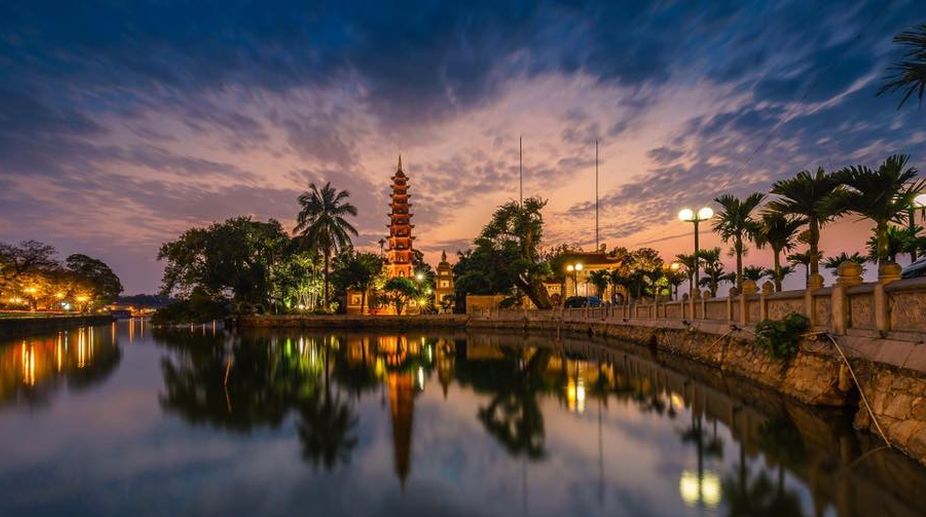One killed, three injured in explosion in paper factory in Vietnam
One paper factory worker died and two others were injured in a huge explosion in Vietnam's Bac Ninh province on Tuesday morning, Vietnam News Agency reported.

(Photo: Facebook)
Although Hanoi is the capital of Vietnam, it still retains the mystery and charm of times past, with its narrow lanes and traditional houses. First up, a water puppet show made for a great experience as one got a glimpse of Vietnamese music and puppet dance. Once outside the auditorium, however, the sea of humanity and chaotic traffic — there were no traffic signals — assailed one's senses. Astonishingly, there were no accidents even though people crossed the road by simply waving their hands!
One's first destination outside the city was Halong Bay — located on the north-east of Hanoi, it has been declared as a Unesco natural heritage site in 1994. In 2012, New Seven Wonders Foundation officially named Halong Bay as one of the New Seven Natural Wonders of the World. The mesmerising beauty of the Bay was awe-inspiring and so was the cabin on the overnight cruise — they were tastefully decorated with a magnificent view of the emerald waters and limestone structures around. Fishing villages dot the Bay and every family has a small boat to commute! Next morning, a spectacular sunrise greeted one from the cruise's terrace.
Back in Hanoi, one spotted youngsters sitting on the road in makeshift restaurants. The city comes alive in the evenings, as vehicles are not allowed on the road. While there, a visit to the Ho Chi Minh Mausoleum is much warranted — it was full of visitors but surprisingly, nobody made a noise. The Mausoleum preserves the fully embalmed body of Ho Chi Minh and the gardens behind it are quite beautiful. Ho Chi Minh lived in a house beside a pond and that building has been preserved till date as a reminder of the austere lifestyle practiced by the national hero.
Advertisement
Another must-visit place is the Museum of Ethnology, which showcases art, traditional clothing and reconstructions of traditional long houses from 54 different ethnic groups. Moving on, the One Pillar Pagoda, built in 1020, was destroyed by the French colonisers but rebuilt in 1954. Another edifice from the 11th century, the Temple of Literature, founded in 1070, is dedicated to Confucius — it is the site of Vietnam's first university and also a place for budding monks.
Next on the schedule, was Hue, Vietnam's capital for more than 140 years. A cruise down the Perfume River brought the Thien Mu Pagoda into view before reaching the Imperial City. Located in the heart of Hue is the Imperial Citadel built in the early 19th century modelled on the Forbidden City of Peking. The royal family used to stay in the complex and the king's portrait is still on display inside. Most of the structures around were destroyed during the American War in Vietnam.
Before reaching Hoi An, one stopped over at Langco Beach, the city of Danang and the famous Dragon Bridge. Hoi An is a picturesque riverside town and was one of South East Asia's major international ports during the 17th, 18th and 19th centuries. The town has two different types of architecture — Vietnamese and French.
One cannot go to Vietnam and not visit Ho Chi Minh City, formerly known as Saigon, which is the largest in the country. Saigon was annexed to Vietnam in the 17th century — today, there are many shopping areas and they are comparatively cheaper than Hanoi. There, places like the Emperor of Jade Pagoda, the Notre Dame Cathedral and the Central Post Office must be seen. The same goes for the China Town area and it retains a traditional feeling. The Opera House is another beautiful tourist sight of Ho Chi Minh City. In the morning, a drive down to Chau Doc on the Cambodian border offered a glimpse of fertile rural Vietnam. The city is located by the Hau River, a branch of the Mekong. It is situated 250 kms west of Ho Chi Minh City. After checking into Victoria Hotel, the evening was spent sitting on the ground floor garden with the river in front. Thus, the trip to Vietnam came to an end as Cambodia called.
Advertisement